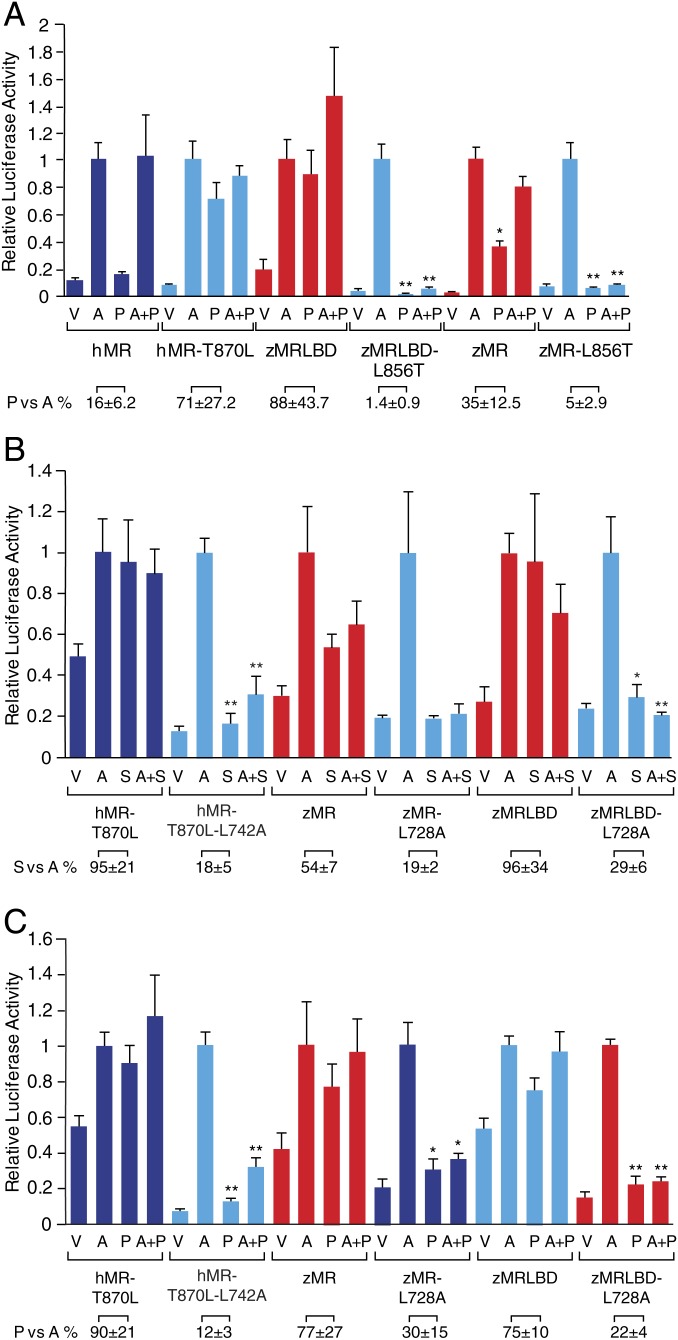Fig. 2.
Characterization of the role of leucine at position 856 in the zMR in the agonist response to progesterone and spironolactone. The approach is described for Fig. 1E with each data point representing the mean ± SEM derived from three independent experiments. (A) Transactivation responses of hMR 870 leucine and zMR 856 threonine. The analysis in Fig. 1E was repeated with 1 μM progesterone (P). Progesterone and progesterone plus aldosterone are less than aldosterone alone (*P < 0.01; P < 0.001) where indicated. The relative response, progesterone versus aldosterone (P vs. A), significantly differs between the intact MR LBD and the corresponding mutant MR LBD (P < 0.01). (B) Transactivation responses when the leucine in helix 1 (hMR 742 and zMR 728) is converted to alanine. The response of hMR threonine 870 leucine (hMR-T870L), hMR-T870L containing an alanine at position 742 (hMR-T870L-L742A), WT zMR (zMR), WT zMR (zMR) containing an alanine at position 728 (zMR-L728A), zMRLBD, and zMRLBD containing an alanine at position 728 (zMRLBD-L728A) to ligand (10 nM aldosterone [A] and 1 μM spironolactone [S]) were analyzed as for Fig. 1E. Spironolactone and spironolactone plus aldosterone are less than aldosterone alone (*P < 0.05; **P < 0.001) where indicated. The relative response, S vs. A, differs between the intact MR LBD and the corresponding mutant MR LBD (P < 0.001). (C) Transactivation responses when the leucine in helix 1 (hMR 742 and zMR 728) is converted to alanine as in C but with progesterone (P). All treatment groups (A, P, and A+P) are greater than vehicle alone (P < 0.05). Progesterone and progesterone plus aldosterone are less than aldosterone alone (*P < 0.05; **P < 0.001) where indicated. The relative response, P vs. A, significantly differs between the intact MR LBD and the corresponding mutant MR LBD (P < 0.01).

